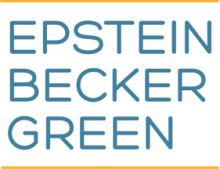On June 30, 2025, the Office of Inspector General (OIG) of the U.S. Department of Health and Human Services posted Advisory Opinion 25-05 (AO 25-05) to its website.
AO 25-05 is a favorable opinion that allows a medical device manufacturer to reimburse purchasers of its device for actual costs up to $2,500 incurred from needle stick injuries caused by failure of the device without running afoul of the federal Anti-Kickback Statute (AKS).
According to AO 25-05, the device at issue is used to administer immunizations and other drugs to patients via injections and is more expensive than typical needles. The device has a safety mechanism to protect the user that covers the needle except when the needle penetrates patient tissue during the injection. When users experience a needle stick injury, their employers usually cover the associated costs, including retraining staff, staff absences and replacement, counseling for injured workers, and possible additional costs in the event of a lawsuit or higher insurance premiums or workers compensation premiums.
The medical device manufacturer proposed to reimburse purchasers up to $2,500 for actual costs of needle stick injuries caused by a failure of the device, not user error, as long as the purchaser acknowledges and agrees to the terms of the device’s warranty, which include:
- The proposed arrangement benefits only the purchaser and not third parties;
- The manufacturer warrants that the device, if used in accordance with its descriptions and intended purpose, will not cause a needle stick injury to a user;
- The manufacturer’s sole obligation, and the purchaser’s sole remedy, is a payment to the purchaser equal to the amount of documented actual costs incurred by the purchaser because of the failure of the device and resulting needle stick injury to a user, up to the $2,500 limit;
- The manufacturer will not be otherwise liable to the purchaser or any third party for any needle stick injury nor will manufacturer indemnify any purchaser or third party related to a needle stick injury; and
- The “warranty period” lasts for 1 year, starting from the date of purchase of the device.
The warranty excludes payment for any medical, surgical, or hospital expenses incurred by a user who is a federal health care program beneficiary.
In its analysis of the proposed arrangement in AO 25-05, the OIG concluded that while the arrangement would implicate the AKS because the device manufacturer would offer purchasers something of value – up to $2,500 for actual costs incurred as a result of failure of the device – which could induce purchasers to buy the device, the proposed arrangement would be protected by the warranty safe harbor.
The safe harbor, 42 C.F.R. 1001.952(g), defines a “warranty” as:
[a]ny written affirmation of fact or written promise made in connection with the sale of an item or bundle of items, or services in combination with one or more related items, by a manufacturer or supplier to a buyer, which affirmation of fact or written promise relates to the nature of the quality of workmanship and affirms or promises that such quality or workmanship is defect free or will meet a specified level of performance over a specified period of time.
The OIG applied the warranty safe harbor elements to the proposed arrangement:
- The buyer must fully and accurately report any price reduction of an item or service (including a free item or service) that was obtained as part of the warranty in the applicable cost reporting mechanism or claim for payment and must also provide this information to the Secretary of HHS or State agency upon request - Not applicable because the arrangement does not involve any price reductions.
- The manufacturer must comply with certain requirements for reporting price reductions - Not applicable because the arrangement does not involve any price reductions.
- The manufacturer must not pay any remuneration to any individual (other than a beneficiary) or entity for any medical, surgical, or hospital expense incurred by a beneficiary other than for the cost of the items and services subject to the warranty – The warranty excludes payment for any medical, surgical, or hospital expenses incurred by a user who is a federal health care program beneficiary.
- If a manufacturer offers a warranty for more than one item or one or more items and related services, the federally reimbursable items and services subject to the warranty must be reimbursed by the same federal health care program and in the same federal health care program payment – The manufacturer offers a warranty on only one item—the device—and no services, so there is no issue with respect to multiple federal health care program payments.
- The manufacturer must not condition a warranty on a buyer's exclusive use of, or a minimum purchase of, any of the manufacturer's or supplier's items or services – The manufacturer certified that it does not condition the proposed arrangement on a purchaser’s exclusive use of, or a minimum purchase of, the device.
While the proposed arrangement was determined to meet the warranty safe harbor and thus does not blaze any new paths, AO 25-05 does provide comfort to medical device companies that providing reasonable reimbursement for device-related injuries, under specified conditions, should not constitute a prohibited inducement in violation of the AKS.




 />i
/>i

